 Weird Stuff
Weird Stuff  Weird Stuff
Weird Stuff  Mysteries
Mysteries 10 Tragic Disappearances and Deaths in Joshua Tree National Park
 History
History 10 Ways Childhood Really Sucked in the Old West
 Music
Music 10 Name Origins of Famous Bands from the 1990s
 Religion
Religion 10 Biggest Turnarounds by the Catholic Church
 Weird Stuff
Weird Stuff 10 Unbelievable Times Laws Had Unintended Consequences
 Humans
Humans Ten Historic Women Who Deserve Way More Credit Than They Got
 Movies and TV
Movies and TV 10 Films That Spawned Major Lawsuits
 History
History Ten Times Towns Were Wiped Off the Face of the Earth
 Creepy
Creepy 10 of the Most Disturbingly Haunted Public Houses in the UK
 Weird Stuff
Weird Stuff 10 Niche Subcultures That Are More Popular Than You Might Think
 Mysteries
Mysteries 10 Tragic Disappearances and Deaths in Joshua Tree National Park
 History
History 10 Ways Childhood Really Sucked in the Old West
Who's Behind Listverse?

Jamie Frater
Head Editor
Jamie founded Listverse due to an insatiable desire to share fascinating, obscure, and bizarre facts. He has been a guest speaker on numerous national radio and television stations and is a five time published author.
More About Us Music
Music 10 Name Origins of Famous Bands from the 1990s
 Religion
Religion 10 Biggest Turnarounds by the Catholic Church
 Weird Stuff
Weird Stuff 10 Unbelievable Times Laws Had Unintended Consequences
 Humans
Humans Ten Historic Women Who Deserve Way More Credit Than They Got
 Movies and TV
Movies and TV 10 Films That Spawned Major Lawsuits
 History
History Ten Times Towns Were Wiped Off the Face of the Earth
 Creepy
Creepy 10 of the Most Disturbingly Haunted Public Houses in the UK
Top 10 Tacky Automotive Features of the 1970s
In many ways, the 1970s was a time of both transition and decline. This is especially true with regard to the American automotive industry, which began to struggle under the weight of increasing fuel costs, strict government emission and safety regulations, as well as a deluge of fuel-efficient foreign competitors. While American automakers tried their best at producing small, fuel-efficient cars such as the AMC Gremlin or Ford Pinto, they were never really good at it. Rather, most vehicles rolling off Detroit assembly lines remained large, and simply traded their muscle for more luxurious appointments. As the decade progressed, this focus on luxury trickled down even to lower-priced intermediates. By the late 1970s, a sort of pseudo-luxury car was left with emission system-choked small blocks, thick velour interiors and tacky chrome-on-plastic accents. Here’s a look at some of the tacky appointments domestic luxury cars of the 1970s received, listed subjectively from the somewhat useful to the less-so. Some are not exclusive to the 1970s, but were still widely used at the time.
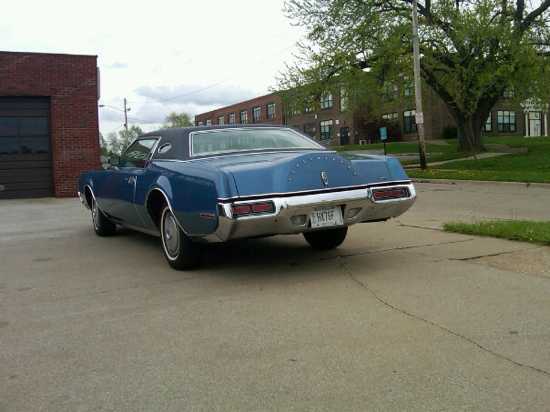
Like many other styling features on this list, spare tire humps were attempts to mimic the custom-bodied cars of the early 20th century. The first Lincoln Continental sported a covered spare, which was both functional and attractive. Lincoln designers pushed this feature on many Continental models over the years, even when they were no longer used for housing a spare and looked awkward, if not tacky, on more modern luxury cars. However, some (like the Continental Mark III) wore their tire humps tastefully, leading me to place this styling feature at number 10.
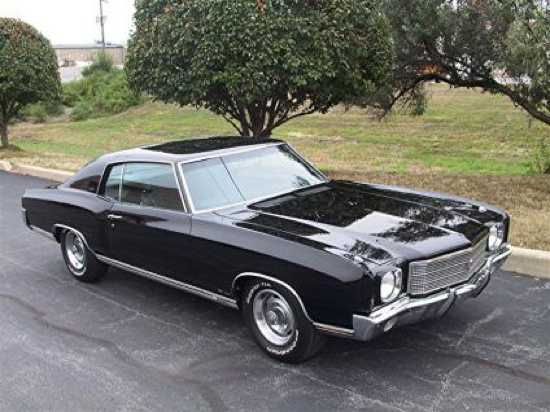
Those who lived during the 1970s will likely remember the immense popularity of two door “personal” luxury cars. These luxury coupes almost always featured small, fixed decorative rear passenger windows that were separated from front windows by a thick b-pillar. The idea was to give rear passengers a sense of privacy, or to some, claustrophobia, while complementing the luxurious appearance of the car. Even less expensive coupes like the Chevrolet Monte Carlo sported small rear windows reminiscent of a formal carriage. Though sometimes tacky, these windows were still somewhat useful (and a few looked good). Thus, they are rightfully placed at number 9.
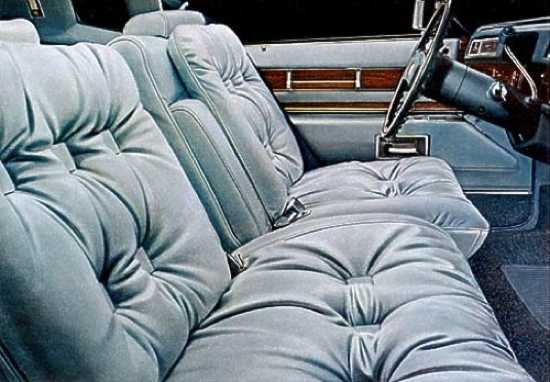
Who wouldn’t want pillow-topped seats for those long, boring road trips? While present-day luxury cars often feature stiff, conservatively padded bucket seats, in the 1970s designers stopped at nothing to provide the utmost in derrière comfort. Cars like the Cadillac Eldorado Biarritz featured thick button-tufted pillow-topped seats, which were literally pillows attached to additional padding below. It is perhaps the closest thing to driving your couch down the expressway. Of course, today these comfortable seats appear geriatric at best and downright garish at worst.
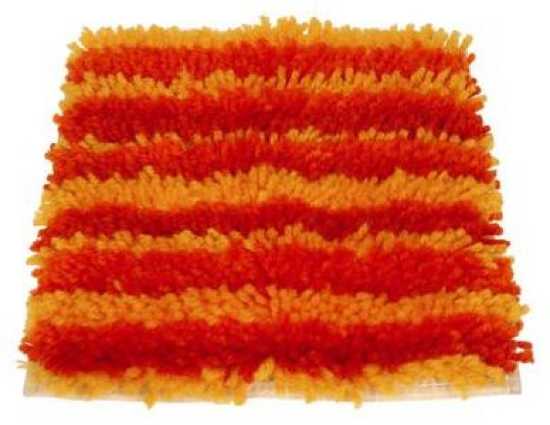
Anyone who has driven a large car of the decade can attest to the excellent carpeting these vehicles usually featured. Some looked like cuts of shag carpet pulled straight from the designer’s own living room, or perhaps a creepy motel room. With carpet like this, it was difficult not to take your shoes off and relax. Nonetheless, these carpet jobs appear gaudy today, especially in typical ‘70s colors. If you don’t mind the look, however, they are quite fantastic.
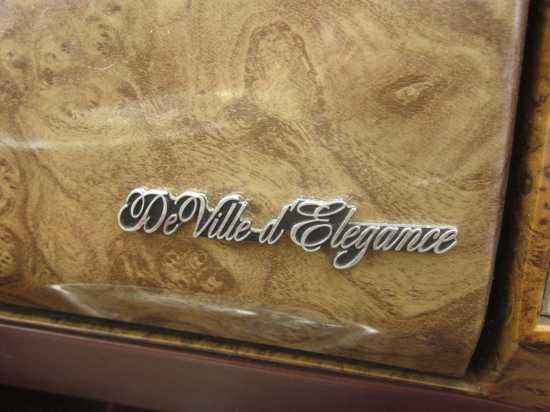
Today, upscale versions of a model are often identified with simple letter or number monikers, like Volvo’s S80 “T6,” or Cadillac’s CTS “V” series. This, of course, doesn’t sound very fancy, now does it? Forty some years ago, however, fancy was in. The most famous upscale trim package term was “Brougham.” Various automakers of the time slapped the Brougham badge on their distinctively-trimmed (and pricier) versions of a particular model. The boxy Ford Grenada even had an upscale “Ghia” version. Yes, “Ghia,” like the Italian firm. But it was General Motors that seemed most keen on this practice, coming up with trim packages like the Monte Carlo “Landau,” Ninety Eight “Regency,” Seville “Elegante” or my personal favorite, the Sixty Special “Brougham d’Elegance.”
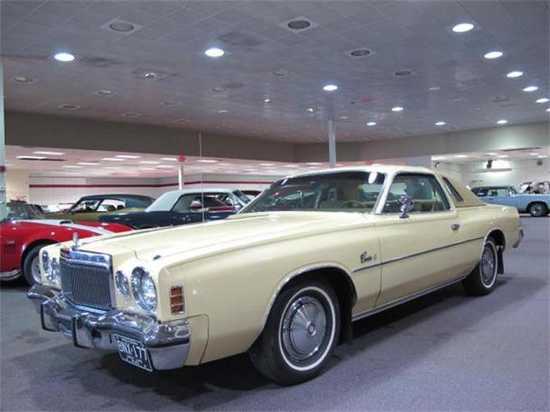
Opera lamps are small decorative lights mounted on the exterior b-pillar. They were all the rage on ‘70s, and even ‘80s, domestic luxury cars. These lights, aside from looking pretty, had little practical application. But they did give the car a more formal appearance similar to a limousine, or formal carriage (a recurring theme). Designers didn’t take opera lamps lightly either, as they developed from simple lens-over-bulb accents to more complex electro-luminescent ordeals. Looking back, they seem both tacky and somewhat unnecessary, perhaps like just another set of bulbs to replace.
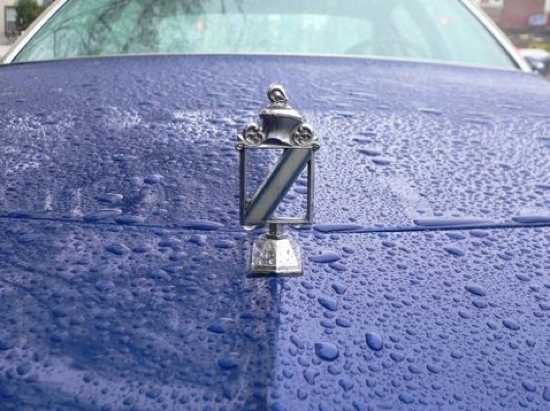
Royal-looking crests aren’t just for those who hold real titles, it seems. They can also be drawn up for businesses, military units or, in this case, car models. Take for instance the Buick Century Regal or Chrysler New Yorker Brougham, each of which received its own attractive, albeit retrospectively kitschy, royal crest. Many less expensive models even wore such fancy crests. In a similar vein, auto designers often convinced famous fashion designers to sign onto creating their own upscale variants of a particular model. Thus, models like the Continental Mark IV Cartier Edition or Seville Gucci left the factory wearing the designer’s logo here and there.
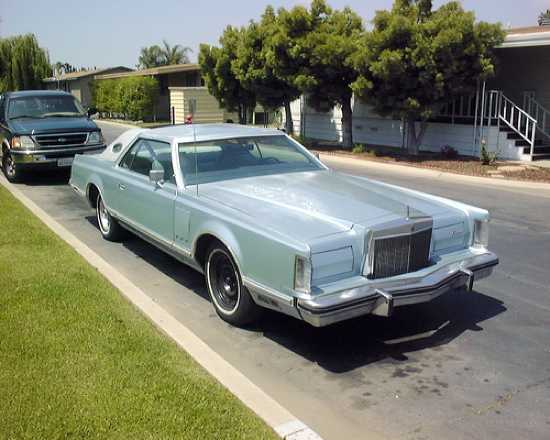
Fender vents were also a nod to custom-bodied luxury cars of the early 20th Century. For instance, large V-12 Cadillacs of the time featured a series of cowl flaps much like an aircraft might. Many years later, designers at Buick, Lincoln and Chrysler, to name a few, thought it a good idea to continue with such flaps, or at least fender vents or ports. These vents were generally unnecessary and usually not even functional. The otherwise attractive R-body Chrysler New Yorker Fifth Avenue sported such “gills,” as did the Lincoln Continental Mark V and Buick Electra 225 (Buicks were already well known for their “VentiPorts”). Faux fender vents remain with us today, much to the chagrin of many an auto enthusiast.
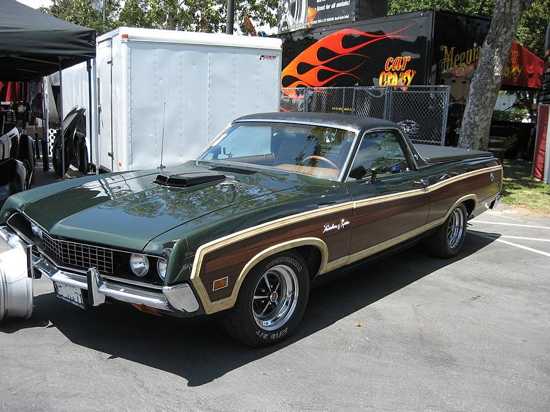
Luxury cars have long sported wooden dashboards, often of finely polished burl with beautiful lacquer finishes. Of course, this costs more and adds a little weight (not that it mattered on a 5,000 lb. car). By the 1970s, designers were already in love with faux wood and even things like clock radios and 35mm cameras featured the stuff. One day an auto designer (or their boss) thought it a good idea to scrap the real wood and make a sort of stick-on stuff. It was great for “woodie” station wagons and dashboards, or so they thought. It doesn’t help, of course, when the “wood” began to fade and peel under the sun.
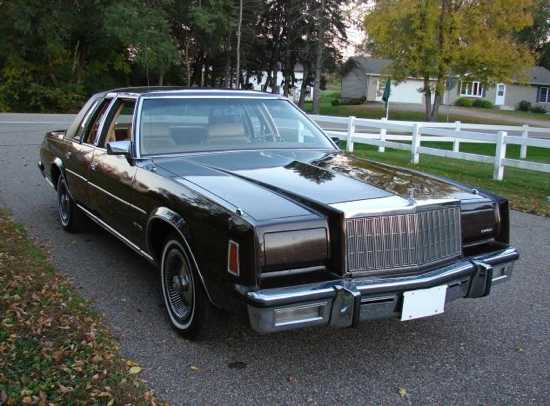
While chrome plating can look remarkable when done correctly (think anything from the 1950s), it can also come off as quite tacky. This is especially true when it’s applied to plastic, which used to have an annoying tendency to flake off once the car was close to pay-off. Apparently, even automakers themselves were aware of how tacky this was, as Chrysler ads once boasted that the grills on ‘70s Imperial and New Yorker models were chromed zinc rather than mere chromed plastic, like the grills found on contemporary Cadillacs. There’s just something about tapping on a piece of chromed plastic that makes one immediately think “cheap.” Oddly enough, automakers continue to use chromed plastic, though it doesn’t seem to flake quite so badly these days.








